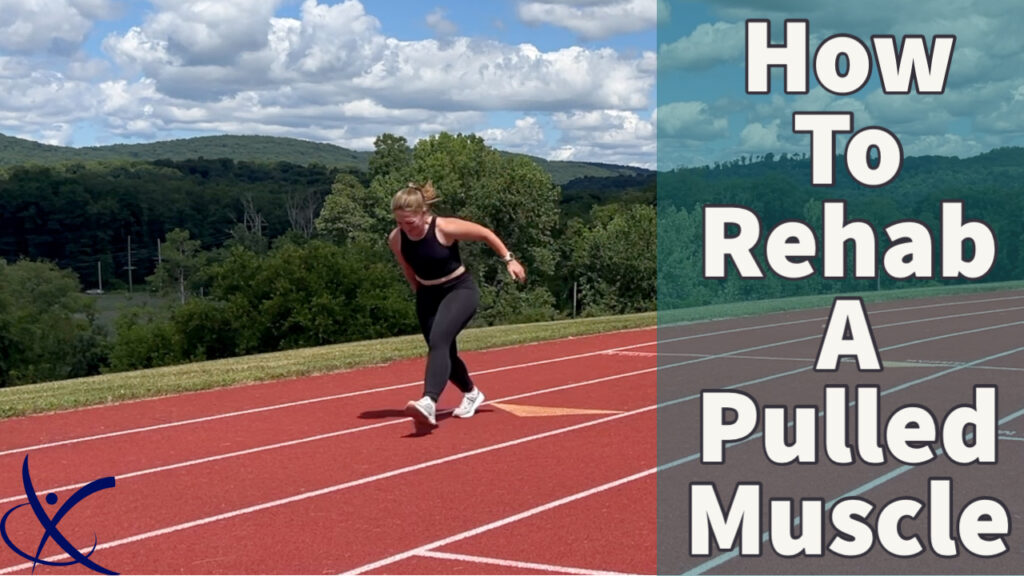How To Rehab Your Pulled Muscle
Pulled Muscle 101
Take the guessing game out of your muscle strain rehabilitation
Ah, the dreaded pulled muscle. Fun, isn’t it?
I’m sure that you’ve heard multiple different things when it comes to taking care of a pulled muscle. Today, I want to take some of the questions that you may have, out of the equation.
So, what is a muscle strain?
A muscle strain is also referred to as a pulled muscle. Strains occur when a muscle becomes overstretched under load or when the demand imposed on a muscle is greater than its capacity (strength). Basically, you’ve asked your muscle to do more than it can handle.
What happens to the muscle?
These situations often result in microscopic or full tearing in muscle tissue. Depending on the amount of muscle impacted and the severity of the injury, you may note bruising occur. These injuries occur most frequently in muscles that cross two joints including the quadriceps, hamstrings, and calves. They also occur frequently in the hip adductors (inner thigh).
Are there different types of muscle strains?
Strains are often classified into three grades based on severity. Severity is graded upon strength and range of motion loss as well as the location of the pain within the muscle (high, mid, low).
Grade 1: Mild tearing and damage to individual muscle fibers that causes minimal strength and range of motion loss. Athletes may return to sport in 2-4 weeks.
Grade 2: Moderate damage to muscle fibers that causes a moderate to significant loss of strength and range of motion. This may demonstrate some associated swelling & bruising. These injuries may require a 2-3 + month recovery period.
Grade 3: A complete rupture of muscle or tendon. These can present with a palpable defect in the muscle or tendon. These injuries cause a significant loss of strength and range of motion and sometimes require surgery to reattach the damaged muscle or tendon.
How do I know if I strained a muscle?
Pain secondary to a muscle strain often occurs when a muscle is contracted or stretched. The discomfort associated with a pulled muscle can manifest as a “significant tightness” to a sharp “stab”. In the acute injury phase, the pain may be more consistent depending on the severity of the injury. As time passes, pain should fade at rest and with contraction or stretch. If you have a grade 3 tear, you may note a disparity in muscle
What should I do when I pull a muscle?
I’m sure you’ve heard the acronym R.I.C.E. (Rest, Ice, Compress, Elevate) for taking care of acute injuries. However, recent literature recommends utilizing the P.E.A.C.E & L.O.V.E principle (Protect, Elevate, Avoid Anti-Inflammatories, Compress, Educate & Load, Optimize, Vascularize & Exercise). I’m sure you’ve noted the lack of “Ice” in the second acronym. The biggest difference is that the second acronym takes a much more active approach to muscle healing!
I’m not going to go into depth regarding the P.E.A.C.E & L.O.V.E principle. However, here are some of the important things to remember during the acute stage of a muscle injury.
PROTECT the injured area for 1-3 days. That means let it rest, no stretch! Most of us are inclined to throw a stretch at anything that hurts. However, in the long run, that stretch may be doing a bit more harm than good when it comes to healing from an acute muscle pull.
ELEVATE & COMPRESS the region. Elevation helps improve interstitial fluid flow & decrease edema. Compression aids in swelling management which is important for tissue healing! This can be done with tape or bandages when appropriate.
AVOID ANTI-INFLAMMATORIES. I’m sure you’re questioning this statement. Did you know that early use of things like Motrin or Advil can negatively impact long-term tissue healing? This also includes the use of ice. Cryotherapy (use of ice post-injury) may help relieve pain; however, ice can alter the inflammatory and revascularization processes which are required for healing.
LOAD with appropriate intensity. After the immediate strain settles down and you can tolerate the pain and discomfort, it’s time to get moving! In the early phase of rehabilitation, you don’t want to overexert the tissue. The old school train of thought said to rest for at least a week and that all exercise should be pain-free. However, recent literature has shown that exercising up to a pain threshold of 4/10 beginning 2-3 days post-injury has delivered similar outcomes to those who only performed “pain-free” exercises.
Depending on the severity of the muscle pull or strain that you have experienced will dictate your rehabilitation. The goal is to demonstrate similar movement, strength, and tolerance to an intensity between limbs prior to returning to activity. Re-injury should not regularly occur, and if this is the case, you’re returning to activity too quickly!
